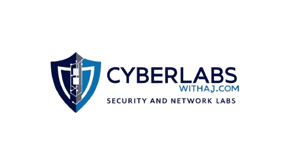The Future of Network Automation with Ansible, Netmiko & Python
Explore how Ansible, Netmiko, and Python are reshaping network automation in 2025. Learn how engineers are simplifying configuration, scaling faster, and reducing manual errors.
BOLGS


The Future of Network Automation with Ansible, Netmiko & Python
The Future of Network Automation with Ansible, Netmiko & Python
Meta Description:
Explore how Ansible, Netmiko, and Python are reshaping network automation in 2025. Learn how engineers are simplifying configuration, scaling faster, and reducing manual errors.
🌐 Introduction: Why Network Automation Matters in 2025
With the rise of cloud environments, remote teams, and hybrid networks, manual device configuration is becoming a bottleneck. Network automation is no longer a luxury — it's a necessity.
In 2025, tools like Ansible, Netmiko, and Python scripting are empowering network engineers to automate repetitive tasks, ensure consistency, and scale operations faster than ever.
🤖 What is Network Automation?
Network automation refers to the process of automating the configuration, management, testing, and operation of physical and virtual network devices — like routers, switches, and firewalls.
Rather than logging into each device manually, engineers now use scripts and playbooks to handle thousands of configurations in minutes.
🛠️ Key Tools Driving Network Automation
Let’s break down the 3 core tools shaping network automation in 2025:
🔹 1. Ansible – Agentless & Scalable Automation
Ansible by Red Hat is a powerful, agentless automation platform used to configure devices via SSH or APIs.
Why it's popular:
Simple YAML-based playbooks
Works with Cisco, Juniper, Arista & more
Doesn’t require software installation on devices
Scales easily across multi-vendor networks
✅ Example Use Case: Push VLAN config to 100+ switches in a single playbook run.
🔹 2. Netmiko – Python Library for CLI Automation
Netmiko is a Python library built to simplify SSH connections to network devices.
Why it stands out:
Supports 60+ vendors
Great for custom one-off scripts
Easy to learn for Python beginners
Perfect for backup, show commands, or interface monitoring
🧠 Example Script: Pull "show ip int brief" from all Cisco routers and export to CSV.
🔹 3. Python – The Backbone of Network Automation
Python remains the most in-demand language for network engineers.
What makes Python powerful in networking:
Integrates with APIs (REST, NETCONF)
Works with Nornir, Netmiko, Napalm
Ideal for custom dashboards & data parsing
Huge community support
🔧 Engineers now use Python to automate troubleshooting, alerts, device onboarding, and even real-time monitoring.
⚡ Benefits of Using These Tools Together
BenefitDescription🔁 ConsistencyPush identical configs to all devices⏱️ SpeedReduce config time from hours to minutes📉 Error ReductionEliminate typos & manual mistakes📊 AuditabilityStore changes in Git & track history🔐 ComplianceEnforce security policies via playbooks
🔮 Future Trends in Network Automation (2025 & Beyond)
Intent-Based Networking (IBN): Define what the network should do — automation handles the “how.”
Event-Driven Automation: Trigger scripts based on log alerts, SNMP traps, or threshold breaches.
GitOps for Networking: Use Git as a source of truth for network configs and rollbacks.
AI-Assisted Automation: Predict outages and auto-heal configs with ML models.
Cloud-Native Networking: Automate hybrid/cloud networks with Terraform + Ansible combos.
🧪 Example Use Case: Real-World Lab Setup
Imagine a scenario:
You have 50 branch routers
You want to push QoS policies and VLAN configs
Using Ansible + Python + Git, you:
✅ Write a YAML playbook
✅ Pull data from inventory CSV
✅ Log results, validate configs
✅ Rollback instantly if errors are detected
That’s real power — and it’s happening today.
✅ Conclusion: Time to Skill Up
As networks grow more complex, automation is your superpower. Whether you're a student or a senior engineer, learning Ansible, Netmiko, and Python will not only save hours of manual work — it’ll prepare you for the future of networking.
The future is automated, and the time to learn is now.
